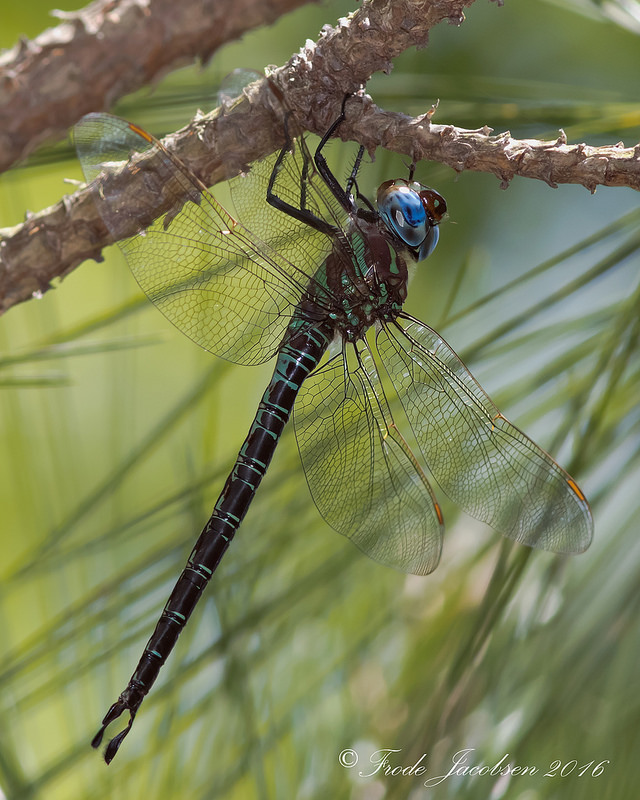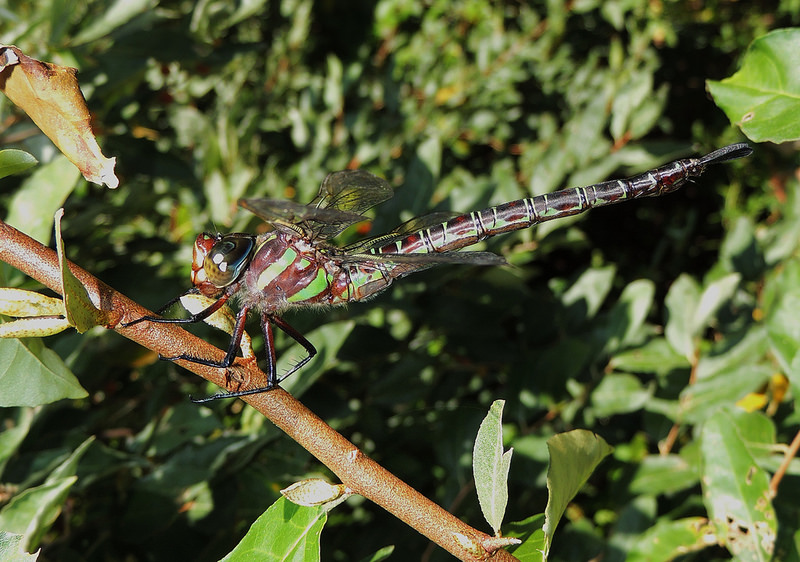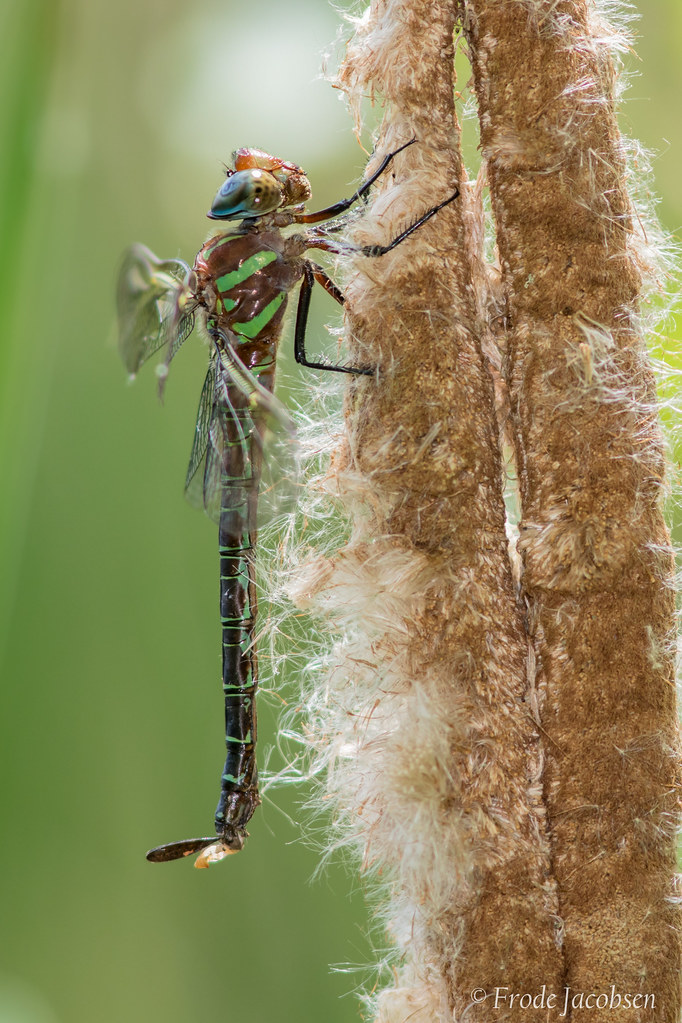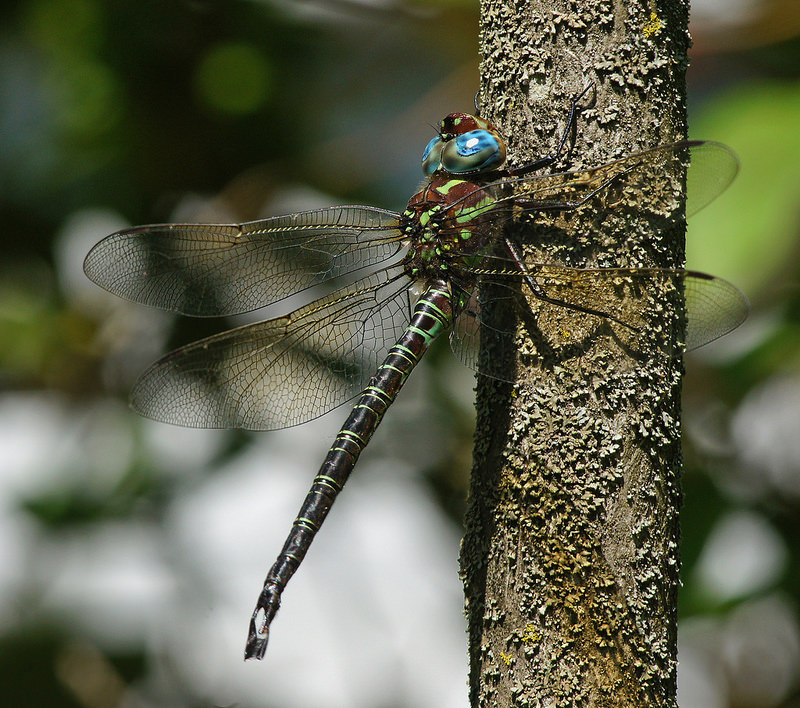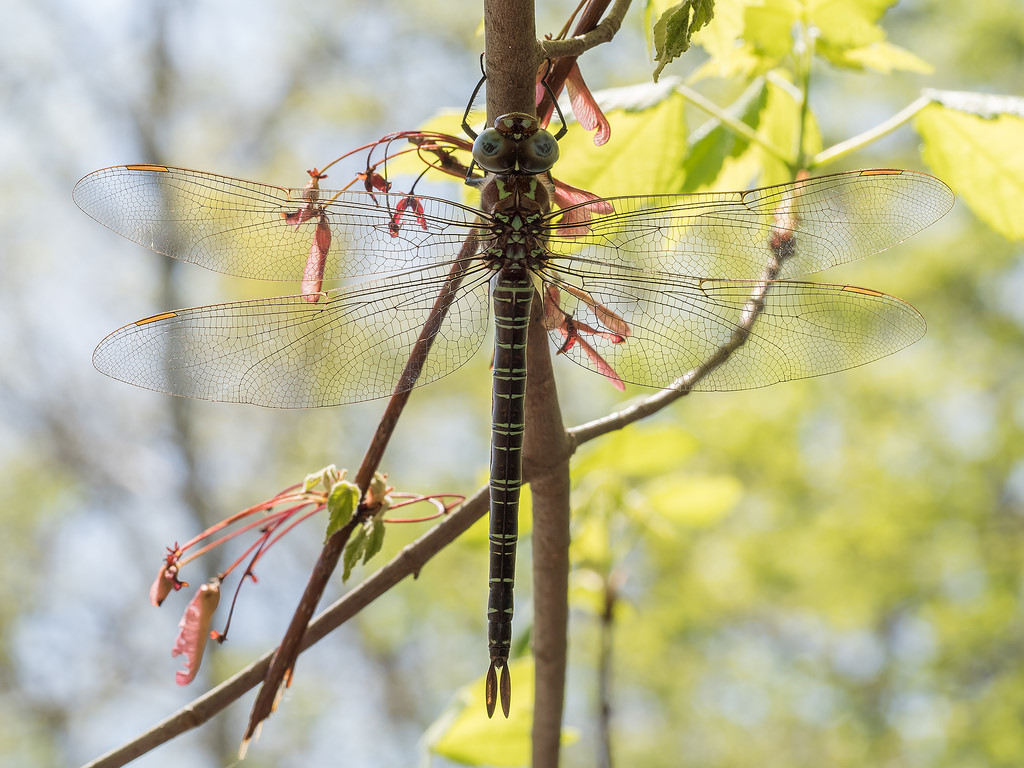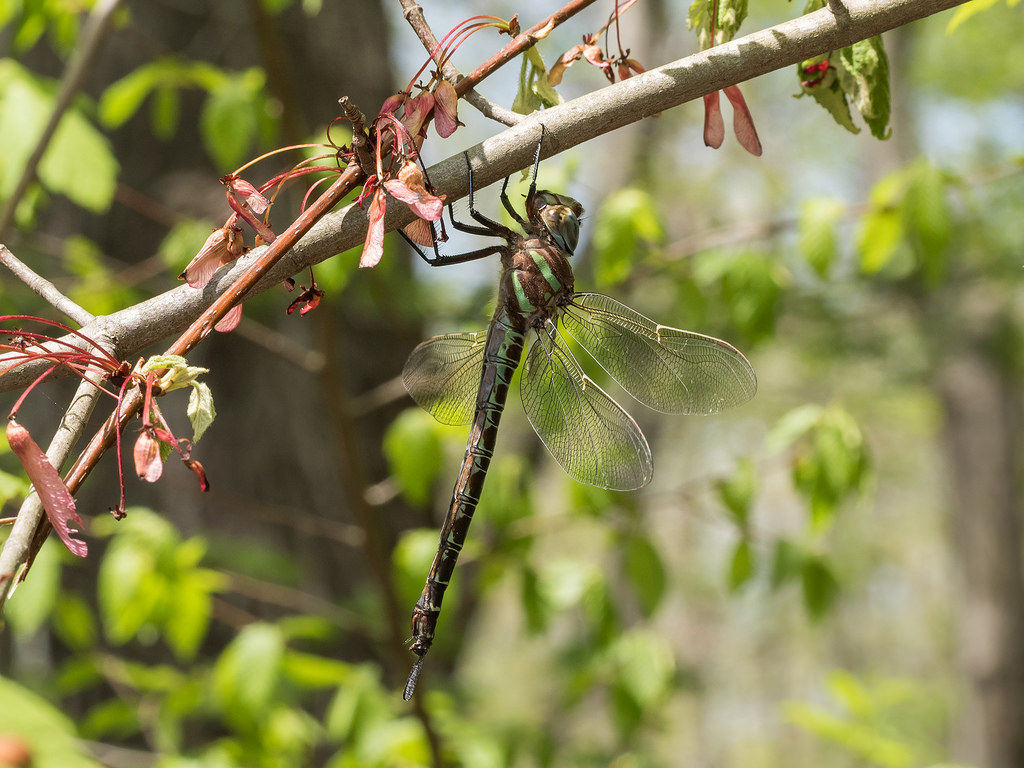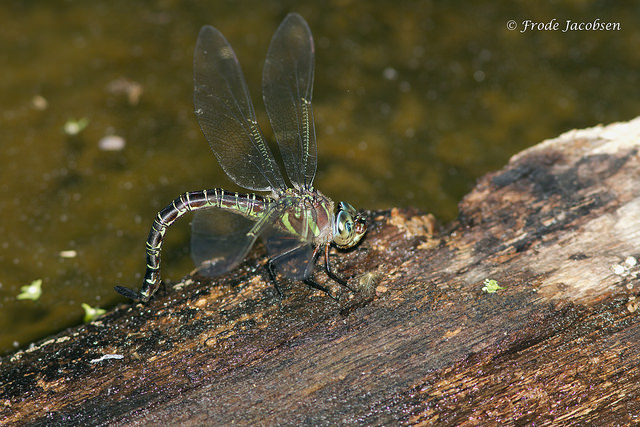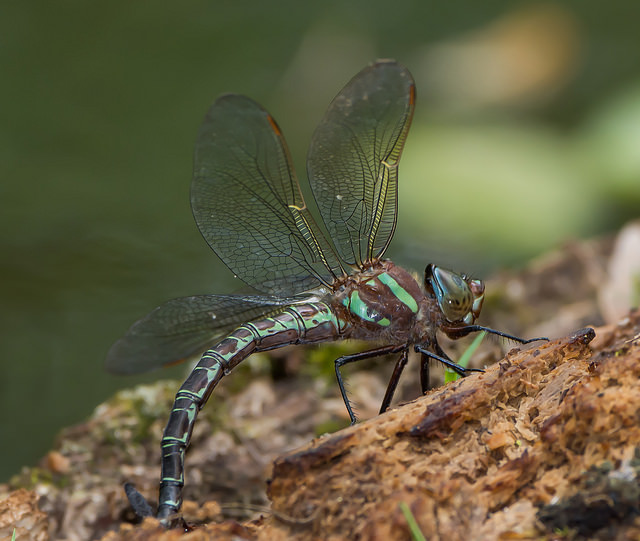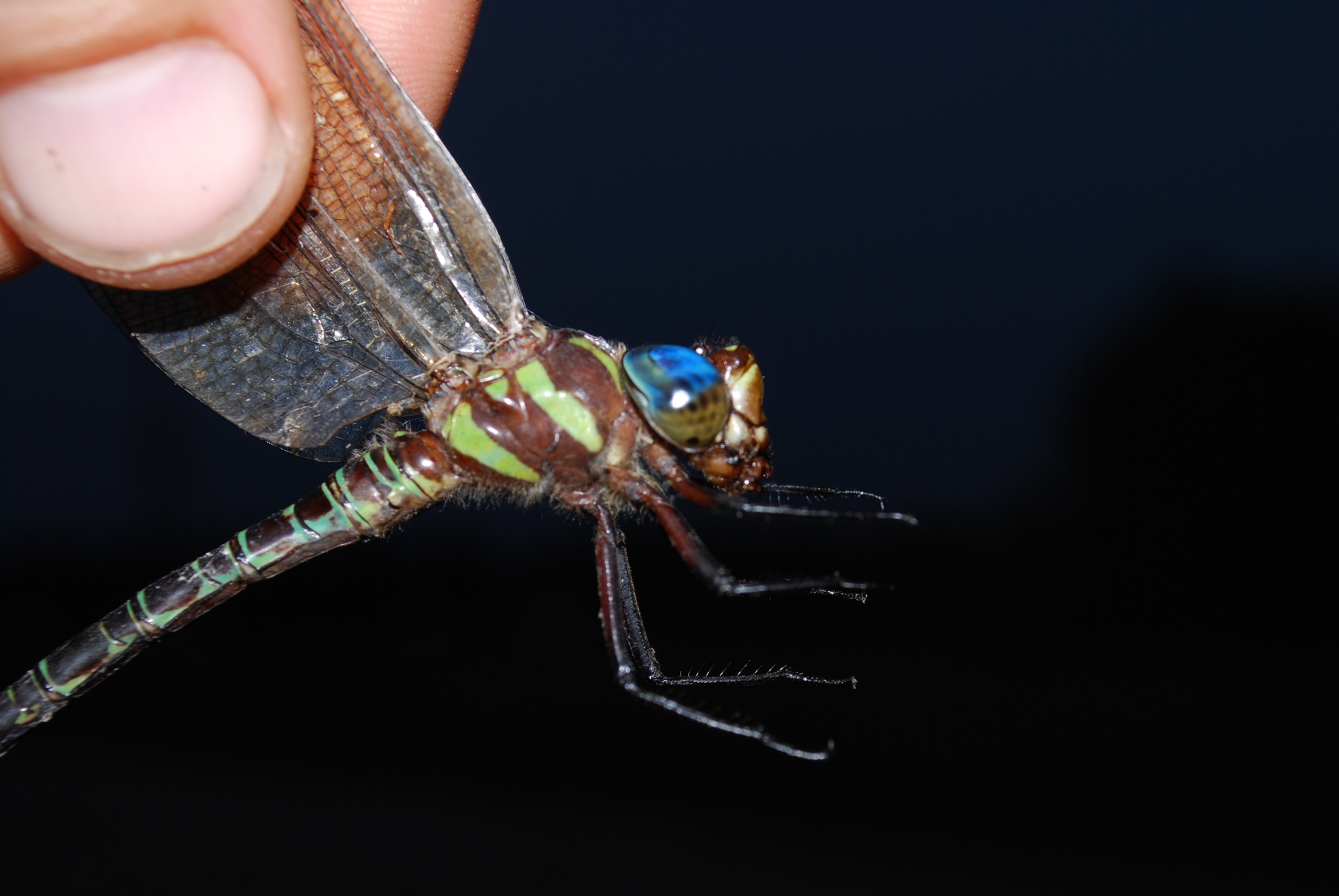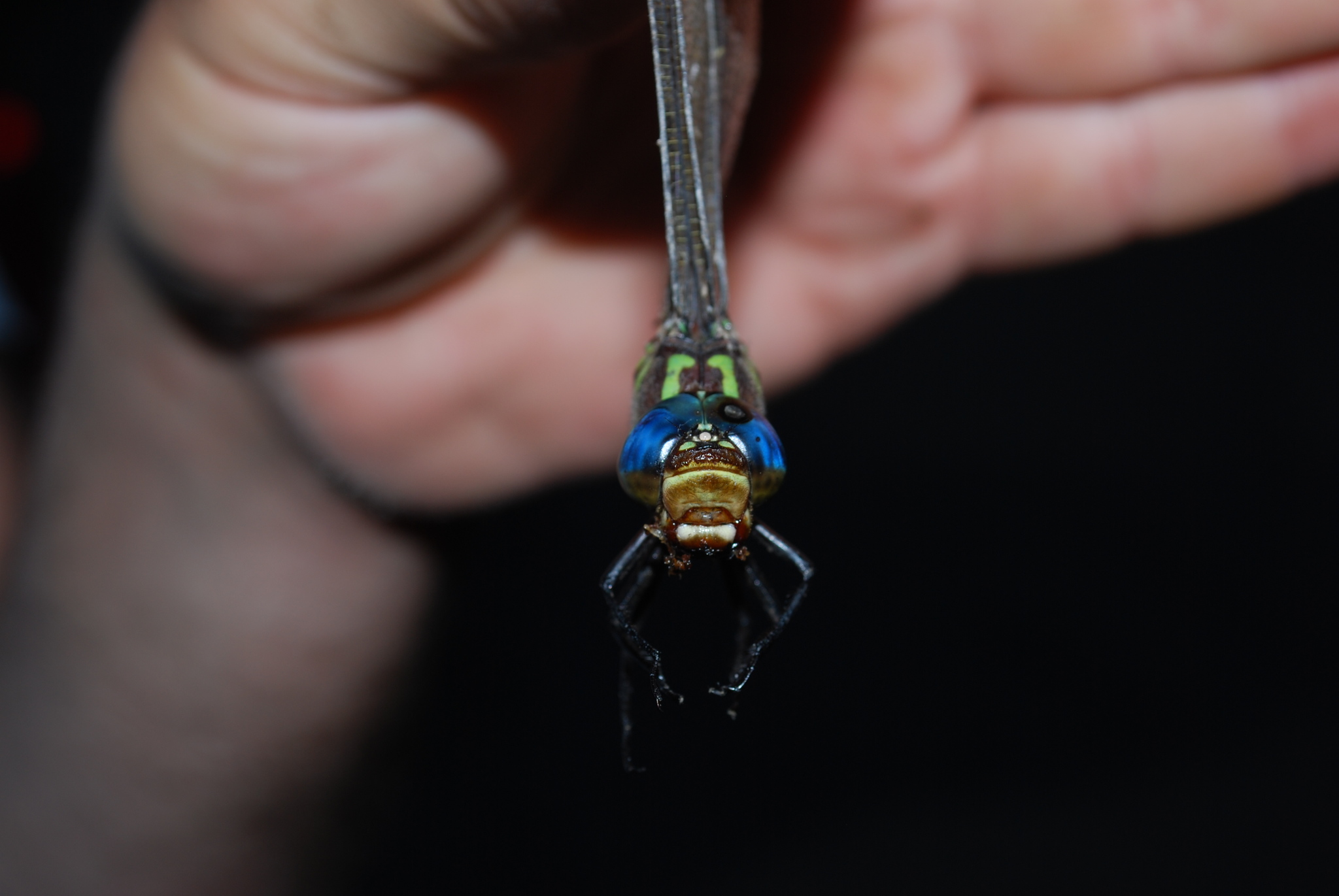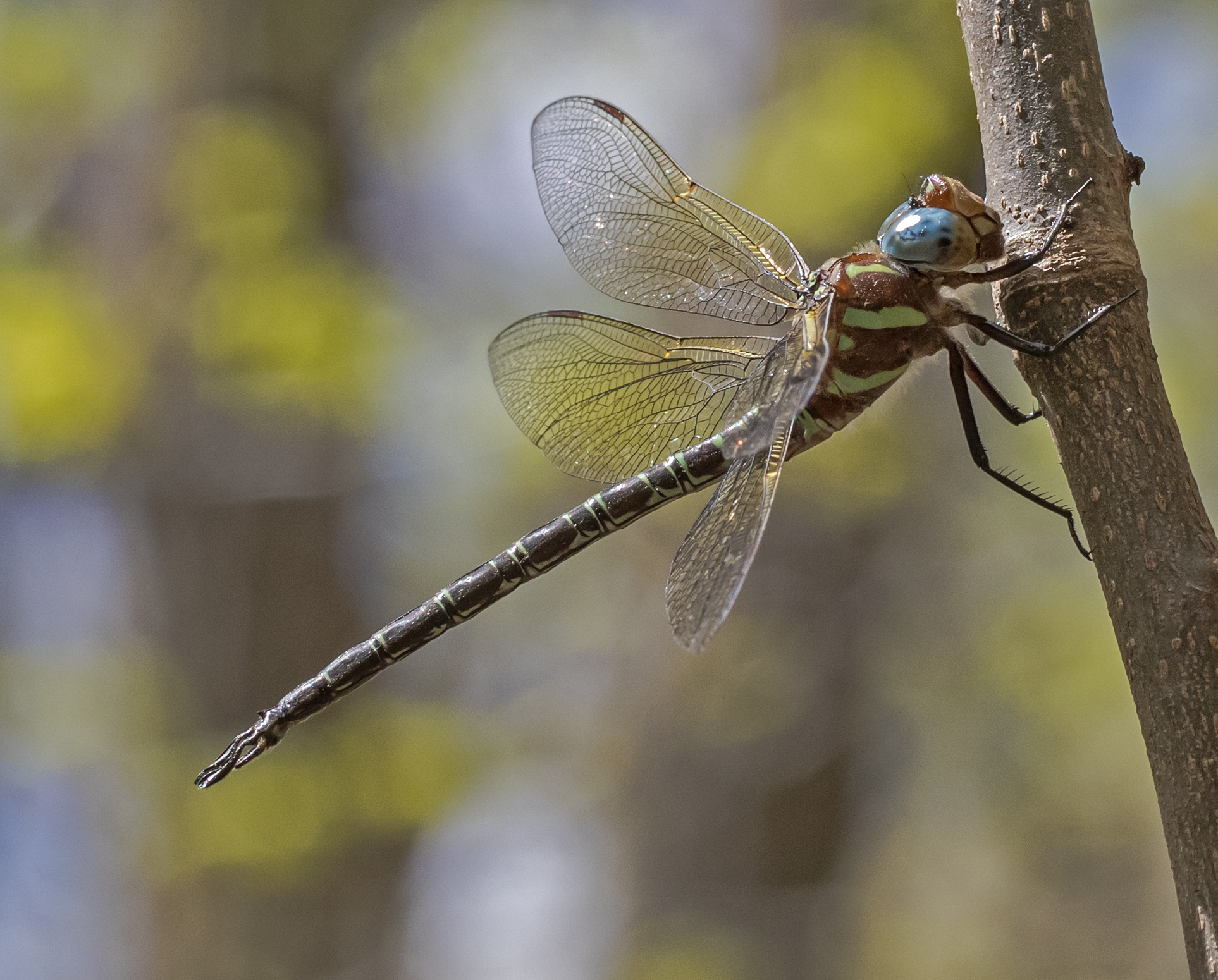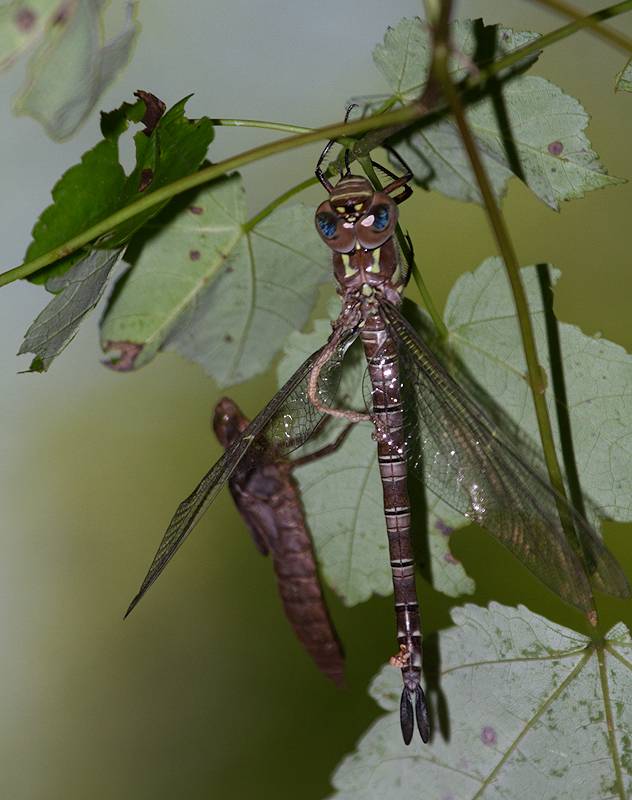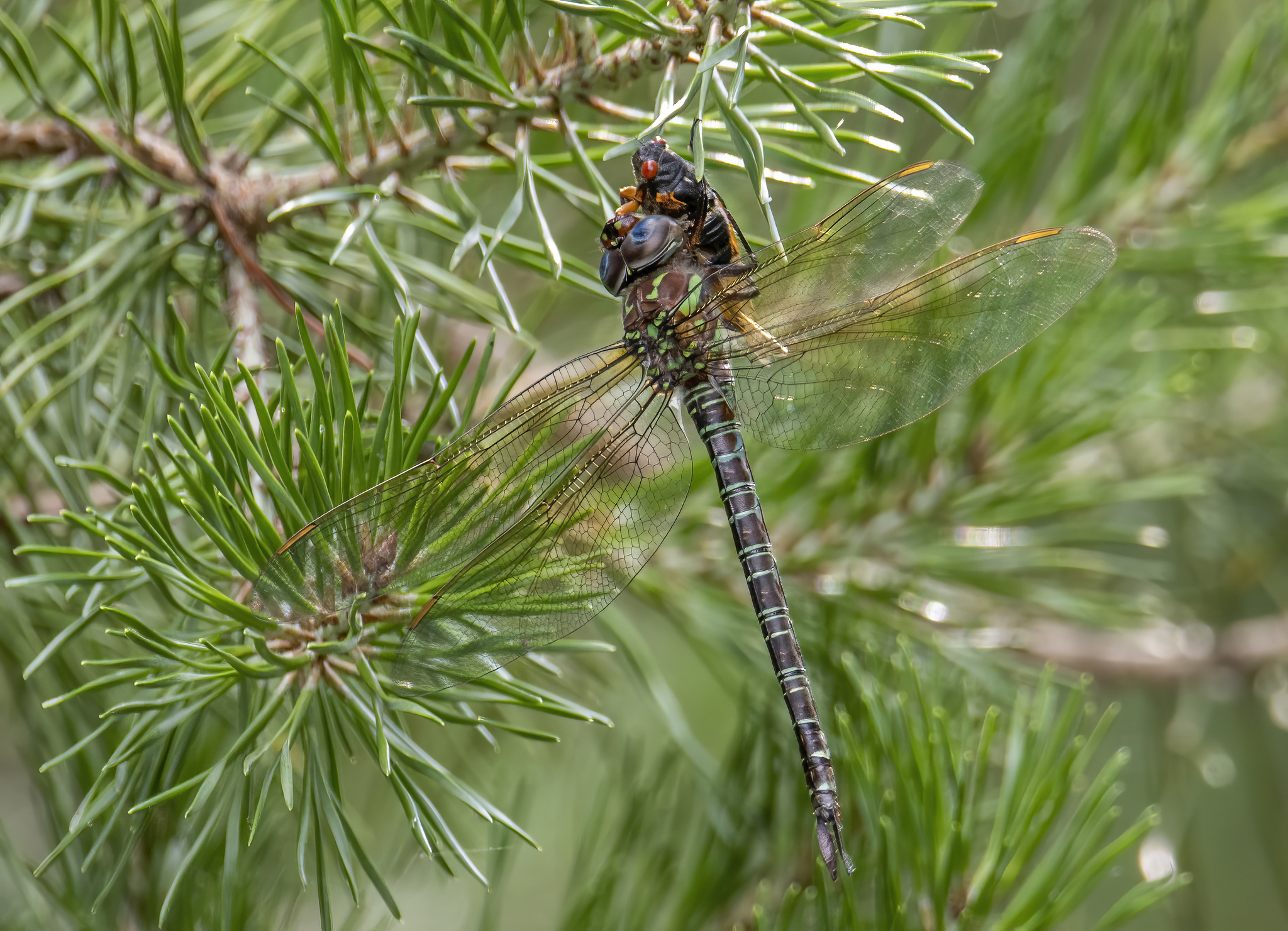Map Snapshot

























342 Records
Status
Swamp Darner (Epiaeschna heros) is the largest dragonfly species in Maryland, and one of the largest in the east. As the name suggests, this species breeds in wooded swamps, where females oviposit into rotting wood. This species can often be seen on summer evenings hunting over forested areas in impressive feeding swarms (Paulson, 2011). Swamp Darners are common in Maryland, and there are records from every county (Richard Orr's The Dragonflies and Damselflies of Maryland and the District of Columbia).
Description
The elongate ringed abdomen, dark-and-green coloration, blue eyes, and large size of Swamp Darner are distinctive. Cyrano Darner (Nasiaeschna pentacantha) is similar in color, and often occurs in the same habitat.
Seasonality Snapshot
Source: Wikipedia
| Epiaeschna heros | |
|---|---|

| |
| Scientific classification | |
| Domain: | Eukaryota |
| Kingdom: | Animalia |
| Phylum: | Arthropoda |
| Class: | Insecta |
| Order: | Odonata |
| Infraorder: | Anisoptera |
| Family: | Aeshnidae |
| Genus: | Epiaeschna |
| Species: | E. heros
|
| Binomial name | |
| Epiaeschna heros (Fabricius, 1798)
| |
Epiaeschna heros, the swamp darner, is a species of darner in the dragonfly family Aeshnidae. It is found in the Caribbean Sea and North America.[2][3][1][4]
The IUCN conservation status of Epiaeschna heros is "LC", least concern, with no immediate threat to the species' survival. The population is stable. The IUCN status was reviewed in 2017.[1][5][6]

References
[edit]- ^ a b c Paulson, D.R. (2017). "Epiaeschna heros". IUCN Red List of Threatened Species. 2017: e.T48790596A65836129. doi:10.2305/IUCN.UK.2017-3.RLTS.T48790596A65836129.en. Retrieved 12 November 2021.
- ^ "Epiaeschna heros Report". Integrated Taxonomic Information System. Retrieved 2019-12-25.
- ^ "Epiaeschna heros". GBIF. Retrieved 2019-12-25.
- ^ "Epiaeschna heros species Information". BugGuide.net. Retrieved 2019-12-25.
- ^ "Odonata Central". Retrieved 2019-07-02.
- ^ "World Odonata List". Slater Museum of Natural History, University of Puget Sound. 2018. Retrieved 2019-07-02.
External links
[edit] Media related to Epiaeschna heros at Wikimedia Commons
Media related to Epiaeschna heros at Wikimedia Commons

